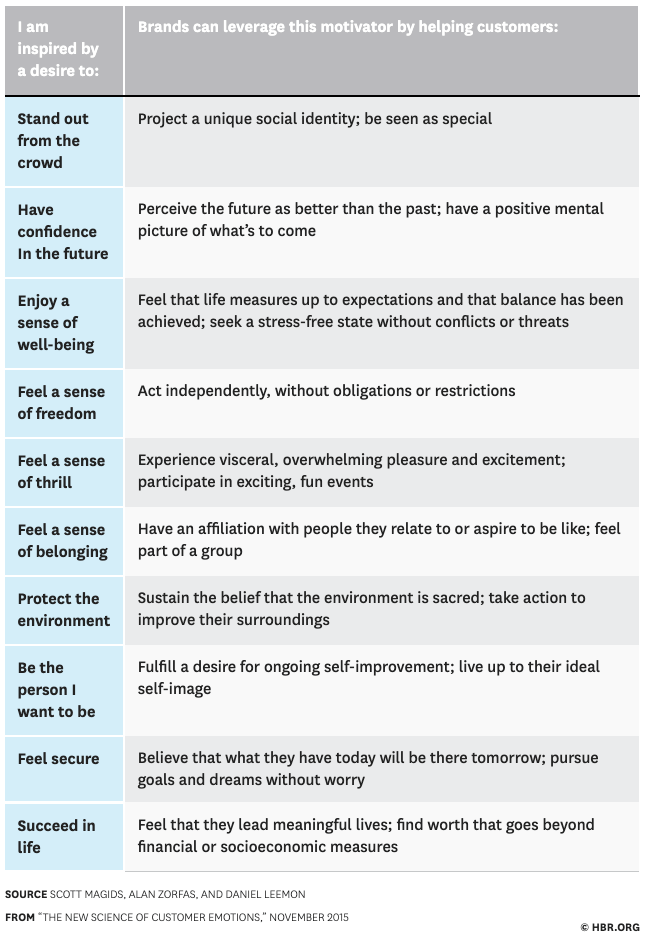This website uses cookies so that we can provide you with the best user experience possible. Cookie information is stored in your browser and performs functions such as recognising you when you return to our website and helping our team to understand which sections of the website you find most interesting and useful.
Why successful Marketers are leveraging emotion within their communications strategy.
The ability to elicit emotion, whether positive or negative, determines the success of all marketing and communications strategies. Emotion underpins the way humans make decisions. It can live in the conscious, where we maintain control, or dwell in the subconscious, influencing our behaviour without input.
Why is ‘emotional marketing’ so significant?
Emotional marketing involves brands trying to create an emotional response from their consumers or customers. But why is it so critical and how can it be effectively implemented?
Competition is accelerating in every industry. The ease of market entry has been enhanced by accessible online tools, platforms and channels. Start-ups can masquerade as huge organisations and audiences are more discerning than ever before.
Brands need to find new ways to connect.
Being able to pinpoint the specific configuration of emotions needed to trigger certain behaviours is immensely powerful. By understanding the psychology behind the desired actions, brands can build more effective relationships with their audiences. Marketing departments have to go beyond informative or even educational content, instead aspiring to emotive messaging that makes consumers think and feel.
“Scientists have uncovered that humans feel first and think second. When confronted with sensory information, the emotional section of the brain can process the information in one-fifth of the time the cognitive section requires.”
– Let’s Get Emotional: The Future Of Online Marketing, Forbes
The audience audit
Understanding your audience is the first step in discerning which tools are needed to audit and leverage their emotions.
Who are they? What do they want, or need, from your product or service? Their expectations, coupled with your values, should lead how you position yourself and communicate with them.
Having identified your target demographics, social listening tools can begin to map how your audience are feeling. Work from insight, not instinct. Don’t assume you have a full grasp of their mindset, desires or drivers until you’ve got data that outlines the trends and their collective sentiment.
This mapping plays a critical role in constructing campaign messaging. Emotive cues should be present across all consumer communications. Using these signs to guide outbound communication is essential to trigger the right responses and feelings in the consumer.
After thriving sales figures during the pandemic, iconic leisure brand PELOTON witnessed a slump in revenue in 2022. Taking action, they switched up their messaging. Their communications strategy focused heavily on price-point, moving away from the lifestyle orientated campaigns they had previously used. This proved a mistake. Subsequent social listening exercises uncovered that the key purchase driver for potential audiences was the convenience of the PELOTON. Not the price. The new messaging completely missed the mark as it failed to recognise and then tap into their consumers emotional triggers.1
Once you have identified your target demographics, their life experience, sentiment and behaviours, you have the building blocks of successful tonal values. These tonal values can then be applied to messaging via every communication channel, ensuring your audience feel that emotional connection from the start.
Emotional pathways that lead consumers to action
We understand our audience, but how to create that emotional bond that leads to action?
‘The most sophisticated firms are making emotional connection part of a broad strategy that involves every function in the value chain, from product development and marketing to sales and service.’ – Harvard Business Review2
Marketers have long been aware of this, but until recently it was difficult to measure and quantify the role that emotions play in decision making. That has now changed thanks to advances in neuroscience research, which has led to a greater understanding of how emotions influence our behaviour.
Hundreds of ‘emotional motivators’ drive consumer behaviour.2 The layering of such motivators can then drive a wealth of different actions, and can be manipulated to lead consumers towards a desired outcome.
The below study from 2015 evidences how different desires can be leveraged by brands.

From these complex set of desires, there are three core pillars that should be considered.
Value
Value is the ability to satisfy a want or need. It is important to understand that value is subjective; so identifying the perceived value of your audience is essential. Emphasising the value proposition of your product or service should be unique and specific. It should align with your mission and feel authentic.
Belonging
We are social creatures. Belonging to a place, community or brand feels good. Triggering a sense of belonging creates an emotional pathway where consumers feel they are part of something bigger than just themselves. This then drives them to action.
Trust
A core part of building loyalty to your brand is instilling trust. Your messaging should invoke a sense of trust and comfort. Tapping into trust is one of most common ways of not only gaining the initial buy in, but build the foundation of a loyal client.
How to trigger emotions
We understand which emotional motivators lead to action, but how can Marketers trigger them?
Create a compelling narrative
In contrast to stark facts and figures, storytelling bypasses rationale and logic. It instead hits our emotional centre and is infinitely more powerful. It brings your readers on a journey with you and satisfies both the ‘belonging’ and ‘trust’ pillars over time.
‘Storytelling is everywhere in the consumer world because it does what statistics can very rarely achieve: It makes people feel. Nevertheless, it’s fair to say many B2B marketers tend to be more comfortable telling quantifiable, statistical truths. It’s the reason we avoid telling stories to a business audience: because the word is synonymous with fiction. But sometimes the most powerful stories are the ones that are true.’ – Business Marketing Lead, Pinterest3
Uniting through positive social impact
Creating a lasting positive legacy through your businesses values and actions is a powerful way to increase loyalty, build brand awareness and enhance your reputation. Consumers are deeply responsive to brands that care because they care too. They want to see a brand mirror their own values.
‘89% of Gen Z express their commitment to purchasing from companies that support social and environmental impact.’4
Social proof
Demonstrating how existing customers are benefiting from your services signposts that your brand have credibility and are trustworthy. Using mediums such as case studies or certification and rewards within your campaigns, could be the first step to achieving this. People trust people.
The emotion behind colour
When it comes to leveraging emotion within brand identity, there are multiple factors to consider. The emotional association and influence of colour, has a significant impact on the success of a campaign or even a brand.
Brand identity is the personality of your business. It dictates how you communicate your values and product or services, how you interact with customers and most importantly, how customers feel when they engage with your company.
TMC is no different.
‘When we initially developed our colour palette, a more conservative cyan based blue was used to reflect the summer sky but it always felt very safe. Our clients expect us to be bold and our job is to assist them in achieving greater levels of visibility. The colour pink does just that. If we were not prepared to walk the walk with our own brand, why should our clients trust us with theirs?’
– Tim McCloud, CEO, TMC
Discover our insight to colour theory…
Key takeaways
- Identify your audience and find what makes them tick. Can you snapshot their sentiment? Which are the emotions they experience that drive them to action – frustration, fear, joy?
- Use colour and imagery to create initial impact and elicit the right emotions. Let your creativity tell a story.
- Take the reader through a compelling narrative that really resonates. Even for those B2B audiences.
- Nurture a community that advocate’s loyalty. Develop a marketing campaign strategy that creates a sense of belonging and provide value for consumers. Let them do the talking for you.
Sources:
2. https://hbr.org/2015/11/the-new-science-of-customer-emotions
Share this

